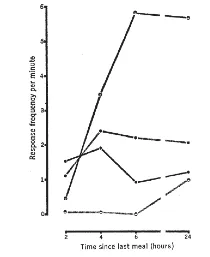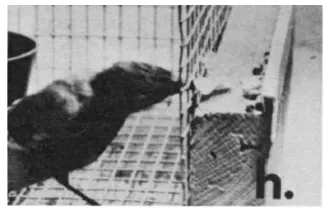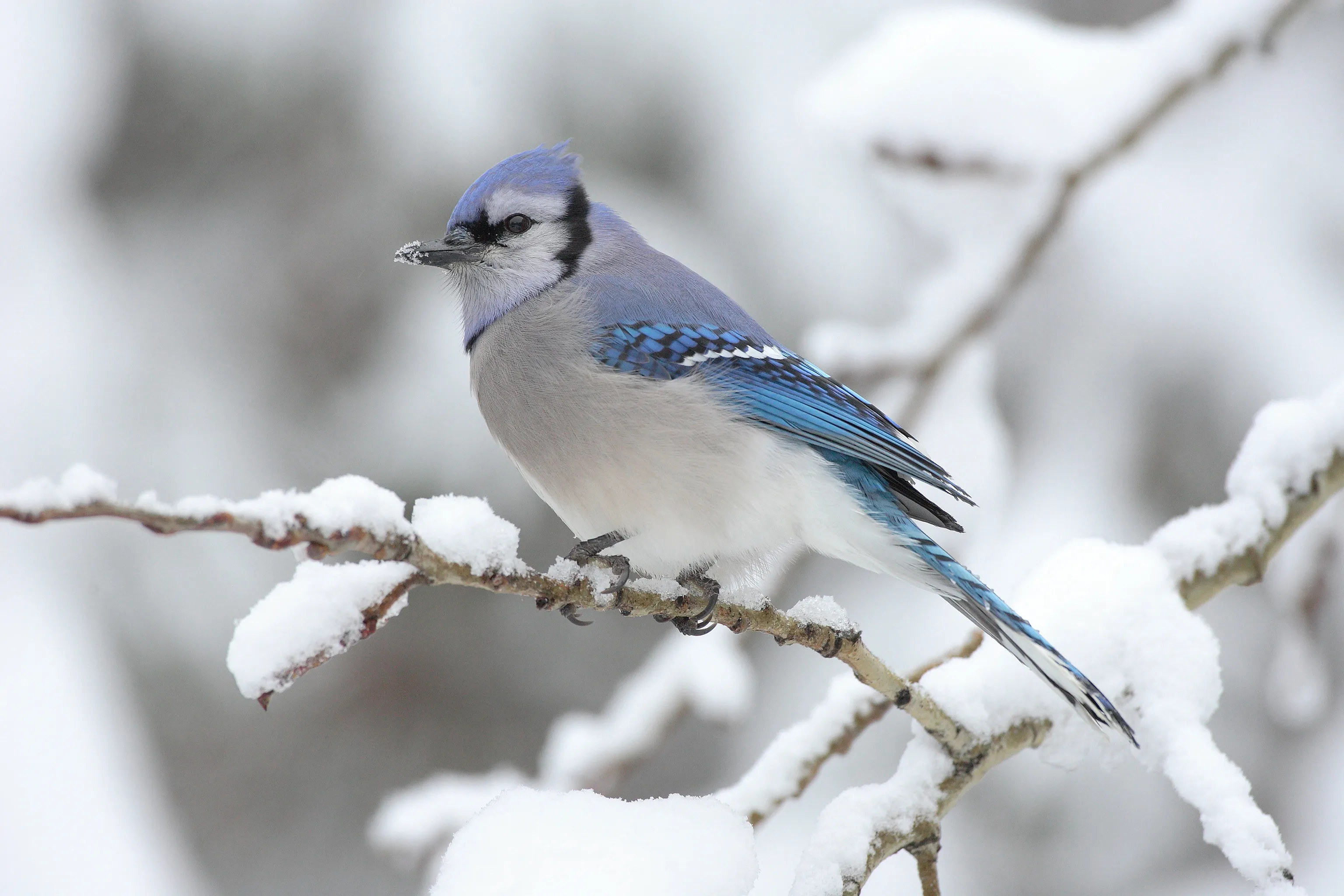Every morning, I start my day watching birds dart around the oak tree and shrubs in my backyard fence. Among the frequent visitors is the striking Cyanocitta cristata, commonly known as the blue jay. With its vibrant blue feathers, white breast, distinctive blue crest, black collar, and black beak, the blue jay stands out effortlessly. Plumage remains consistent across sexes and seasons, making these birds a reliable sight in my early haze. As I sip coffee with my roommate, we observe one perched on a branch before diving to chase away a smaller bird. Exploring blue jay behavior reveals a world of intelligence and complexity far beyond their colorful appearance.
Blue jays belong to the corvid family, alongside crows and ravens, known for intricate social dynamics. Compared to other New World jays, their structure is relatively straightforward. Breeding pairs, often monogamous, form the core unit, as noted by researchers Racine and Thompson. Unlike territorial species, multiple pairs frequently share feeding areas without conflict. Interestingly, large flocks assemble post-breeding in late summer. While many northern U.S. blue jays migrate south for winter, some remain year-round. Studies in a Massachusetts bird sanctuary showed stable winter groups, with banded individuals and their offspring returning to the same sites annually, suggesting bonds extend beyond mere feeding. For more on group formations in birds, check out geese nesting behavior.
Complex Social Structure of Blue Jays
Blue jay behavior thrives on these enduring ties. Even with nearby alternatives, jays stuck to familiar stations, hinting at deeper loyalty. Migration remains puzzling—no single trait predicts who leaves or stays. Stewart’s analysis of over 8,000 recaptured jays along the Atlantic Flyway found no clear patterns. Some experts argue young jays migrate for better winter foraging, while others see equal rates across ages. This variability underscores the adaptability in blue jay behavior, blending resident stability with opportunistic travel.
 Table from University of South Florida study on blue jay dominance relationships (Tarvin & Woolfenden, 1997)
Table from University of South Florida study on blue jay dominance relationships (Tarvin & Woolfenden, 1997)
Dominance Hierarchies and Aggression Patterns
Males typically dominate breeding pairs in blue jay behavior. Tarvin and Woolfenden’s four-year Florida study recorded 316 male-female interactions, with females winning under 1%. Males’ slight size edge—about 5% larger—contributes, but aggression plays a bigger role. Males initiate most conflicts. Pre-breeding in March, males mellow while females ramp up, likely due to nesting energy shifts. Dominance holds firm regardless. From afar, sexes look identical, challenging even experts without close examination. Such hierarchies mirror protective instincts seen in other species, like geese aggressive behavior.
This aggression fuels survival but tempers seasonally. Females prioritize nutrition for eggs, altering interaction dynamics without upending the order. Observations like these highlight how blue jay behavior balances power and cooperation.
Remarkable Tool Use and Intelligence
One standout trait in blue jay behavior is resourcefulness. University of Massachusetts lab tests showed captive jays crafting tools for food. One jay used cage newspaper to snag unreachable pellets. Offered paper clips, ties, feathers, or straw, it succeeded repeatedly. Of eight jays tested, six adopted similar tactics. This corvid ingenuity rivals primates, demonstrating problem-solving prowess.
 Figure from University of Massachusetts study on blue jay tool use frequency (Jones & Kamil, 1973)
Figure from University of Massachusetts study on blue jay tool use frequency (Jones & Kamil, 1973) Blue jay using paper as a tool to gather food outside the cage (Jones & Kamil, 1973)
Blue jay using paper as a tool to gather food outside the cage (Jones & Kamil, 1973)
Hunger amplified this: tool use peaked when food was visible but inaccessible. Such experiments affirm blue jays’ cognitive depth, often overlooked amid their bold reputation.
Mimicry: A Clever Survival Strategy
Blue jays excel in vocal mimicry, part of their deceptive blue jay behavior. Lofton and Clench documented cases in Florida and Texas where jays mimicked red-shouldered hawks. Perched near feeding birds, they’d call like predators, scaring victims away to steal meals. Whether evolved for warning kin or pure trickery, this kleptoparasitism showcases cunning. Imitation extends to other species, confusing observers and predators alike.
These tactics demand precise timing and environmental awareness, blending protection with predation.
Seed Dispersal and Ecological Role
Blue jays play a vital ecological part through caching. Johnson estimates they disperse 5-6% of nut crops, key for post-glacial beech tree spread in eastern U.S. Individuals cache thousands of acorns and nuts yearly, forgetting some to sprout new growth—up to hundreds of meters annually. Unlike most birds, jays transport caches kilometers away, aiding forest regeneration.
 Blue jay with peanut
Blue jay with peanut
This behavior underscores their broader impact, far from mere backyard nuisances. Compare to canadian geese behavior for flock dynamics parallels.
 Perched blue jay in snow
Perched blue jay in snow
Their range spans summer visitors, winter residents, and year-round dwellers, influencing diverse habitats.
My high school mascot was once dismissed as underwhelming, but studying blue jay behavior changed that. From flocks to forgeries, these birds command respect despite occasional domineering traits. Next coffee, I’ll watch closer—not just plumage, but the smart strategies unfolding. Whether mimicking hawks or caching nuts, blue jays enrich ecosystems and intrigue observers. For similar insights, explore canadian geese mating behavior or great horned owl nesting behavior.
References
Stewart PA. 1982. Migration of Blue Jays in Eastern North America. North American Bird Bander 7:107-112. http://elibrary.unm.edu/sora/NABB/v007n03/p0107-p0112.pdf
Racine RN and Thompson NS. 1983. Social Organization of Wintering Blue Jays. Behaviour 87:237-255. http://www.jstor.org/stable/4534305
Tarvin KA and Woolfenden GE. 1997. Patterns of Dominance and Aggressive Behavior in Blue Jays at a Feeder. Condor 99:434-444. http://www.jstor.org/stable/1369950
Jones TB and Kamil AC. 1973. Tool-Making and Tool-Using in the Northern Blue Jay. Science 180:1076-1078. http://digitalcommons.unl.edu/bioscibehavior/66
Lofton RW. 1991. Blue Jay Imitates Hawk for Kleptoparasitism. Fla. Field Nat. 19(2):55. http://www.fosbirds.org/FFN/PDFs/FFNv19n2p55Loftin.pdf
Clench MH. 1991. Another Case of Blue Jay Kleptoparasitism. Fla. Field Nat. 19(4):109-110. http://www.fosbirds.org/FFN/PDFs/FFNv19n4p109-110Clench.pdf
Johnson WC and Webb T III. 1989. The Role of Blue Jays (Cyanocitta cristata) in the Postglacial Dispersal of Fagaceous Trees in Eastern North America. Journal of Biogeography 16:561-571. http://www.jstor.org/stable/2845211
